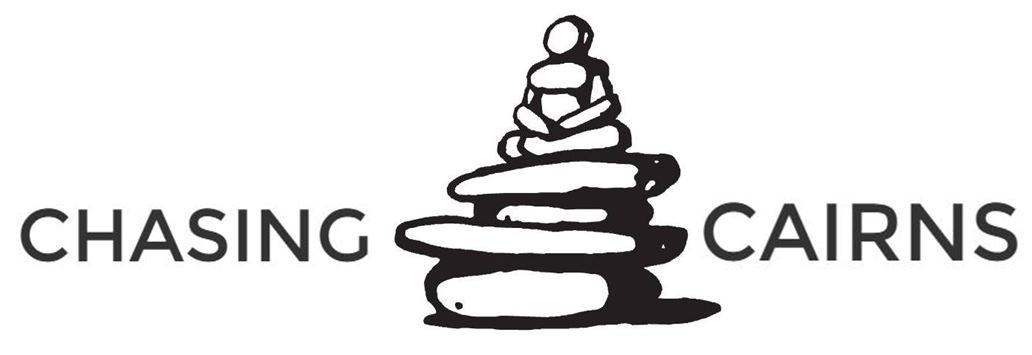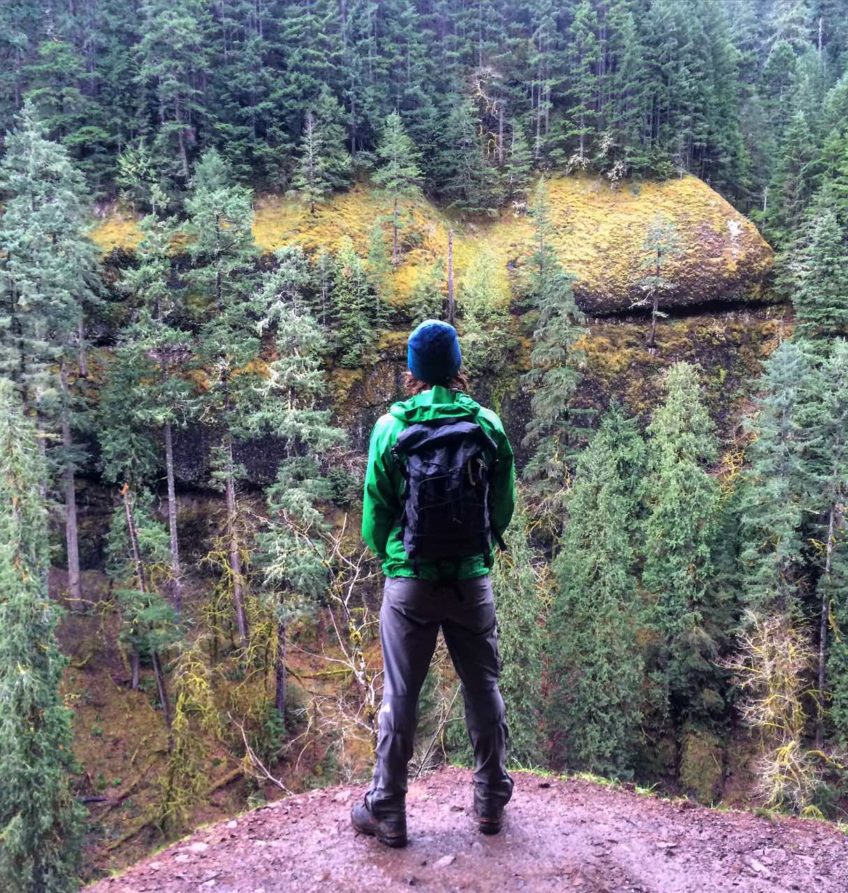Although many people consider Seattle and Portland to be of similar caliber, I have often afforded Portland secondary status. I realized, however, that my assumptions and prejudices could waiver in the face of my upcoming visit. In my younger years, our family ended up in Portland once or twice, but my memory of those encounters is foggy at best. Now, I was preparing to spend the better part of a week there. Although much of that time would be devoted to re-certifying my wilderness medicine credentials with Wilderness Medical Institute, I knew that I would also have time to build on my cursory knowledge of Portland.

Before I get into any more trouble with Portlandians, I must admit that any exploration of the Pacific Northwest would not be complete with out a trip to Portland. Like Seattle, it is an urban representation of the passion for wild adventure that feels innate to this corner of the country. You could grasp the beauty of the region by visiting the Cascade Range, hiking the saturated forests of the Olympics, or marveling at the tumbling waterfalls of the Columbia River Gorge, but you would miss an opportunity to understand the type of people that call that landscape home. The cultural hubs most connected to that scenery are Seattle and Portland. There, you can see the wilderness ethic enacted in an urban setting, you can hear stories of humbling adventure, and you will undoubtedly be inspired to take an adventure of your own. Experiencing these cities is an essential part of experiencing the region itself.

As I planned out the western portion of my journey months ago, I realized that my schedule was almost barren for those entire five months. The only event disrupting the otherwise blank slate was my recertification at the end of January in Portland, OR. That was it. It did mean, however, that I had to be in Portland on a certain day at a certain time, something that I wasn’t necessarily that accustomed to doing this far into my travels. In the end, the course worked perfectly into my schedule. In fact, if I hadn’t had the course, I might never have left Seattle…

For those of you who are not familiar with the world of wilderness medicine, I will bring you up to speed. Organizations like Wilderness Medical Associates (WMA) and Wilderness Medical Institute (WMI) lead courses in comprehensive and accessible wilderness medicine. These principals are meant to provide any hiker, outdoorsman (or outdoorswoman), raft guide, or expedition leader with the skills necessary to make life saving decisions in a wilderness context. The courses bring together inspiring groups of people who have a wealth of experience and ask them to analyze backcountry situations and learn strategies for dealing with them. In my opinion, anyone who spends a significant amount of time in the backcountry should consider one of these courses. They will give you the confidence that you need to deal with your own medical emergencies or help anyone that you come across who may need your assistance. Moreover, they will grow your respect for the risks inherent in backcountry travel.
Six years ago, I made the jump from a certification in basic Wilderness First Aid (WFA) to Wilderness First Responder (WFR). The original, ninety-hour WFR course provided me with a comprehensive framework for assessing and treating medical emergencies in a wilderness setting. It has served me very well. To keep the information fresh, WFRs have to recertify every three years. My time was up. I needed to keep the certification up-to-date for NOLS, so I had no choice but to fit a recertification into my schedule. Portland ended up being the perfect opportunity. The roughly twenty-hour refresher course covered updates to the curriculum, prioritized scenario-based learning, and provided countless reminders about medical situations that we may not have encountered since our last recertification. For me, I have largely used my WFR training to stabilize musculoskeletal injuries, handle gastrointestinal issues, and manage wounds in the backcountry. Strokes, snakebites, and ectopic pregnancies are just a few of the afflictions that I was a bit fuzzy on. Led by the dynamic duo, Pablo and Graham, our course efficiently addressed our questions and pushed us to remember our original training. I left the course feeling a renewed confidence with my ability to determine the best course of action for a variety of maladies in a wilderness context. Way to go WMI!

After my WFR recertification concluded, I had a few days to explore Portland. To my astonishment, a follower on Instagram reached out, eagerly hoping to host me while I was in the area. Amanda urged me to get in contact when I was in town and we eventually set up a time to go hiking the day after I finished my WFR. So far on my trip I have met many people who were formerly strangers in coffee shops, gas stations, grocery stores, hiking trails, etc. Interacting with strangers is a function of this type of travel; otherwise, I would be a hermit (maybe I still am…). That said, most of my time spent with strangers has been short-lived and relatively superficial (for lack of a better term). In Portland, I experienced a new level of generosity. Over the next few days, Amanda, my host, took me hiking, gave me a safe place to park, introduced me to her friends, treated me to dinner, allowed me to shower, and completely let me into her life. I had seen this level of generosity from friends, even friends of friends, but never from a total stranger. It was humbling to say the least. I am still blown away by those few days.



Never having met in person before, Amanda and I planned a day of hiking and waterfall exploration on the Oregon side of the Columbia River Gorge directly east of Portland. Amanda took lead, guiding me through a landscape of cascading water, lush vegetation, and glacial rivers. Our main event was a twelve-mile hike along the Eagle River on a path precipitously cut into the slope above the river. During our hike, we marched past even more waterfalls, one of which Amanda insisted that I clamber out into calf deep water to see. We scrambled over downed trees and hopped over stream crossings for hours until we arrived at our goal: a waterfall with a tunnel blasted into the wall behind it. The setting was not unlike a scene in the Lord of the Rings (specifically the forbidden pool that Faramir finds Smeagol fishing in). I couldn’t avoid the feeling of enchantment as I entered the tunnel so expertly blasted into the basalt and emerged on the other side of the roaring falls. It took me awhile to wipe the grin off my face after that…



With sunset fast approaching, Amanda and I kicked into high gear, quickly retracing our steps at a brisk jog. Eventually, our efforts to avoid hiking in the dark were foiled by a downed tree. As Amanda clambered over the massive trunk, she landed hard on her ankle, turning it inward. From that point forward, we hobbled, then ambled, and then strode out of the woods, as her ability to put weight on her ankle steadily improved. By the end, the only light guiding us over the slick rocks and mud was my headlamp. All in all, a fantastic day on the trail… and what a fantastic hiking partner! There are few better ways to get to know someone than on the trail.


Even though she had left her job early the day before, Amanda had to return to work. I, on the other hand, decided to explore the Washington side of the Columbia River Gorge. Following Route 14 east along the banks of the Columbia, I found myself in a landscape wholly different than that of the opposing bank. The first difference was the weather. The sun shone crisply on the Gorge, burning off the mists and clouds that normally clung to its banks. Above it all, Mount Hood shone like a beacon in the morning sun. As I moved further along the riverbank, I realized that this side did not have the waterfalls and mossy forests of the Oregon side. Moss did not cover every rock or branch as it had on the other side. The beauty here was different.

Acting on Amanda’s suggestion, I made my way to Cape Horn, a steep outcropping rising high above the Columbia. There, I found Brad, an affable Army veteran who spends as much time as possible photographing wildlife and wilderness in the Portland area. His images of the waterfalls, raptors, and rivers of Portland’s environs are stunning. You can check out his portfolio on Instagram here: @bowmanbrad. We spent an hour swapping stories and taking pictures of the Gorge. Eventually, the cold got the better of us and we retreated, going our separate ways. Packing up my gear, I hightailed it back to Vancouver, holing up in a coffee shop for the remainder of the day until Amanda finished up at work.


That evening, Amanda and I headed into the city in search of some delectable vegan eats. On, her roommate, Jacquie’s recommendation, we headed for Blossoming Lotus. Stereotypical as the name may be, the food delicious and our waitress helped us find all the best dishes. My lentil walnut burger with cashew cheese couldn’t have been better and the dark chocolate lavender cake ended the meal on a delectable note. It was one of the best meals of the trip, if not my entire life. Amanda had shown me the best of Portland and I will forever be thankful for that.

As always, a map for the geographically inclined.



3 Responses
Deb Tew
I hope to visit the Portland area and Crater Lake. Would it be possible to take Amtrak between these areas and get local transportation or day tours to see the sights and hike?Enjoying reading your blog.
Brad
Thanks for the shout out! Again, let me know when you are in the area, we have plenty of parking at my place, the wife also cooks some mean grub( we don’t share your Vegan ways, but we’ll cook you up something scrumptious!) and I have some places you need to see!
jcronon
Thank you Brad! I’ll definitely let you know when I am coming back through!